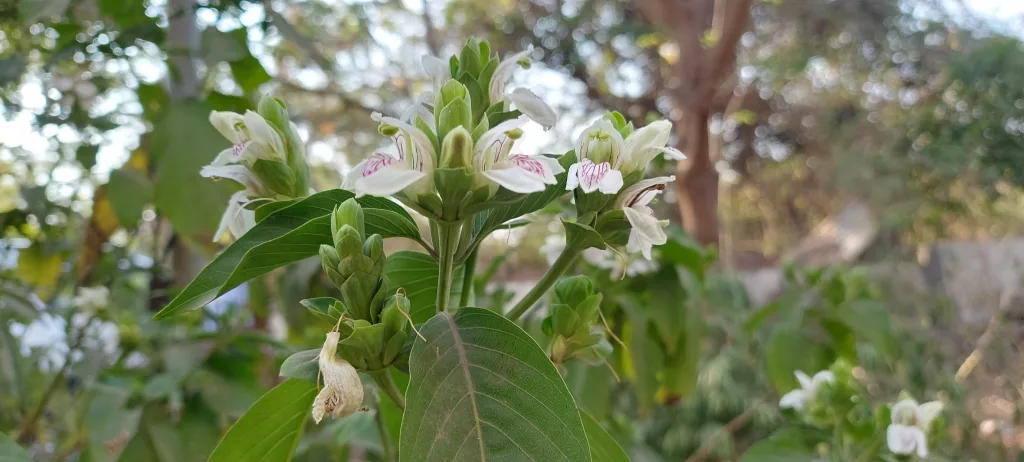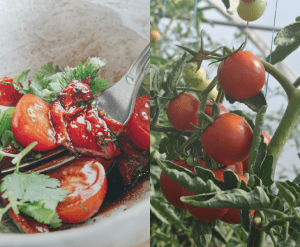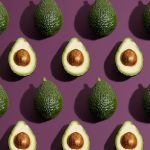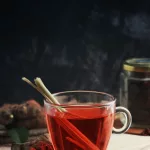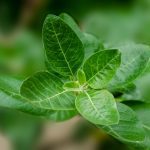Have you encountered Malabur Nut before? If so, you may be interested to learn that it has medicinal potential.
Adathoda vasica, the scientific name for the tall, evergreen herbaceous shrub habitat of the Malabar Nut, is found not only in its native India, but also in Nepal, Sri Lanka, Pakistan, Malaysia, Indonesia and China. Growing between 1.2 and 2.4 metres tall, this dense shrub has a yellowish bark and many long ascending branches.
The lanceolate leaves are 8-9 centimetres long and 4-5 centimetres wide. They are opposite, have blunt tips and are borne on tiny stalks. When dry they turn a dull brownish-green. The bark of the stem is sunny yellow and has many long, opposite, ascending branches.
The inflorescence is a tall, dense spike in the axils and the flowers are typically white. The fruits of this species are hairy and have capsules that look like club handles.
The plant is native to Afghanistan and the countries of the Indian subcontinent (Bangladesh, India, Pakistan, Nepal and Sri Lanka), as well as Laos, Myanmar and Vietnam. It has spread to other regions.

What are some of the ways that Malabar Nut can be used in medicine?
- Bronchitis.
- Treatment of mild cases of leprosy.
- Beneficial in removing toxins and other impurities from the blood.
- Used to help with heart problems.
- Diseases such as asthma and conjunctivitis (sore eyes) and gonorrhoea.
- Reduces the risk of memory loss, nausea and fever.
- May help treat jaundice and leucoderma in their early stages.
- Mouth cancer and diseases.
- Dysuria, also known as painful or difficult urination.
Here’s the scoop on how to get the healing benefits of Malabar Nut.
- The root decoction can be used to treat bronchitis, asthma, vomiting, sore eyes, fever and gonorrhoea. The fruit decoction can also treat bronchitis.
- The leaves can be used to treat gonorrhoea and increase menstrual flow when brewed as a tea.
- The flowers make a decoction that purifies the blood and stimulates circulation. It also prevents jaundice and painful, difficult urination.
- The leaves and roots of this plant are used in a decoction with ginger to treat all types of cough.
- The leaves can be made into a tea and used to treat rheumatism.
- Dried leaves are rolled into cigarettes and smoked to treat asthma.
- The sap of the leaves is used to treat gastrointestinal problems such as diarrhoea and dysentery.
- Infusions of the leaves’ bitter juice are used to help the body expel worms.
- Fresh flowers are used to treat ophthalmia, a severe inflammation of the eyes.
The Malabar nut tree, from its nuts to its bark, is valued for its therapeutic properties. Alkaloids, tannins, saponins, flavonoids and phenolics are just some of the phytochemicals found in abundance in its leaves.
The leaves of this plant contain vasicine, quinazoline alkaloid and essential oils. However, these are not the only chemicals found in Malabar nuts that contribute to its medicinal value.
There are no reports of Malabar nuts having any adverse effects on humans. More research in humans is needed to confirm the potential side effects of malabar nuts. Malabar nuts may be safe when used as directed. However, its safety in children has not been established and it should not be given to children. If you experience any side effects, consult your doctor for treatment.
Disclaimer: This is for informational purposes only.
Did you find this helpful? Let us know in the comments.
You can also visit our Facebook and YouTube pages to know more about plants and their health benefits.
You might also like:

